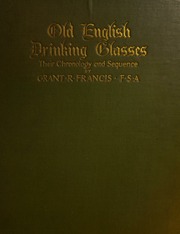Quench Your Thirst for History: Exploring Traditional English Beverages

Ever wondered what quenched the thirst of knights, kings, and commoners in Olde England? Beyond the romanticized images of overflowing tankards, lies a rich tapestry of traditional English drinks, each with its own unique story to tell. From the honeyed sweetness of mead to the robust flavors of ale, the history of English beverages is a fascinating journey through time and tradition.
What exactly constitutes an "old English drink"? The answer is multifaceted and spans centuries. It encompasses beverages consumed during the Anglo-Saxon period, the Middle Ages, and even into the early modern era. These drinks, often brewed locally with readily available ingredients, played a vital role in daily life, social gatherings, and even religious ceremonies. They represent a connection to the past, a taste of history, and a glimpse into the lives of our ancestors.
The landscape of early English drinks was dominated by fermented beverages. Ale, made from malted barley, was a staple across all social classes. Mead, crafted from fermented honey, held a special status, often associated with celebrations and rituals. Cider, produced from apples, offered a refreshing alternative, particularly in regions where apple orchards flourished. These drinks weren't just thirst quenchers; they were sources of nourishment, social lubricants, and integral parts of the cultural fabric.
One of the defining characteristics of early English drinks was their relatively low alcohol content. Unlike modern-day counterparts, these beverages were often consumed throughout the day, even by children. This wasn't necessarily a sign of excessive drinking, but rather a reflection of the lack of safe drinking water. Fermentation, even to a low degree of alcohol, helped to purify water and make it safer for consumption.
As time progressed, so did the art of brewing and the variety of English drinks. New ingredients, techniques, and influences from other cultures shaped the evolution of these beverages. Spiced ales, herbal infusions, and fruit wines emerged, adding complexity and flavor to the traditional repertoire. The history of English drinks is a dynamic narrative, reflecting the changing tastes, technologies, and cultural exchanges of each era.
Historically, ale was so important that it was part of workers' wages. The quality of water was often poor, making brewed beverages safer to drink than water.
A simple example of an old English drink is mead, made by fermenting honey with water. Over time, variations arose, including adding fruits and spices like cinnamon or cloves.
While specific health benefits of old English drinks are debated, some argue that the low alcohol content of small beer provided hydration and some nutrients derived from the grains. Socially, these drinks fostered community and played a central role in gatherings and celebrations. Culturally, they became intertwined with traditions, folklore, and even religious practices.
One of the main challenges related to researching historic drinks is the scarcity of precise recipes. Brewing methods often relied on oral tradition, and written records are often vague or incomplete. This makes it difficult to recreate the exact flavors and characteristics of these beverages.
Advantages and Disadvantages of Exploring Old English Drinks
| Advantages | Disadvantages |
|---|---|
| Connecting with history and culture | Difficulty in accurately recreating historical recipes |
| Experiencing unique flavors | Limited availability of authentic ingredients |
| Discovering the origins of modern beverages | Potential health concerns related to historical brewing practices |
Best practices for recreating old English drinks include researching historical brewing methods, using appropriate ingredients, and considering the cultural context. Experimentation is key, but it's important to approach the process with respect for historical accuracy.
Real examples of old English drinks include small beer, a low-alcohol ale consumed daily; spiced ale, infused with flavors like ginger and cinnamon; mead, made from fermented honey; and posset, a hot milk drink often mixed with ale or wine. Cider, made from fermented apple juice, also played a significant role.
FAQs about old English drinks often include questions about their alcohol content, ingredients, brewing methods, and cultural significance. There's a growing interest in understanding these beverages as a window into the past.
Tips for exploring old English drinks: Visit historical sites or museums that offer demonstrations or tastings. Research traditional recipes and try brewing your own. Join online communities or groups dedicated to historical brewing. Attend festivals or events that celebrate historical food and drink.
In conclusion, the world of old English drinks is a fascinating blend of history, culture, and taste. From the everyday ale to the celebratory mead, these beverages offer a unique glimpse into the lives of our ancestors. Exploring these drinks is more than just a culinary adventure; it's a journey through time, a connection to tradition, and a celebration of the rich heritage of English beverages. The importance of understanding these drinks lies in their ability to connect us to the past, inform our present, and inspire future innovations in the world of brewing. By researching, recreating, and appreciating these historical beverages, we can gain a deeper appreciation for the rich tapestry of English culture and the enduring legacy of its traditional drinks. So raise a glass (perhaps of mead or ale) to the past and toast to the continued exploration of these fascinating beverages! Start your own exploration today, and discover the rich history that awaits in every sip.
Navigating the unexpected portland maine power outages
Lil tony rapper youtube exploring the online presence of a rising artist
Discover your dream kota kemuning single storey house













